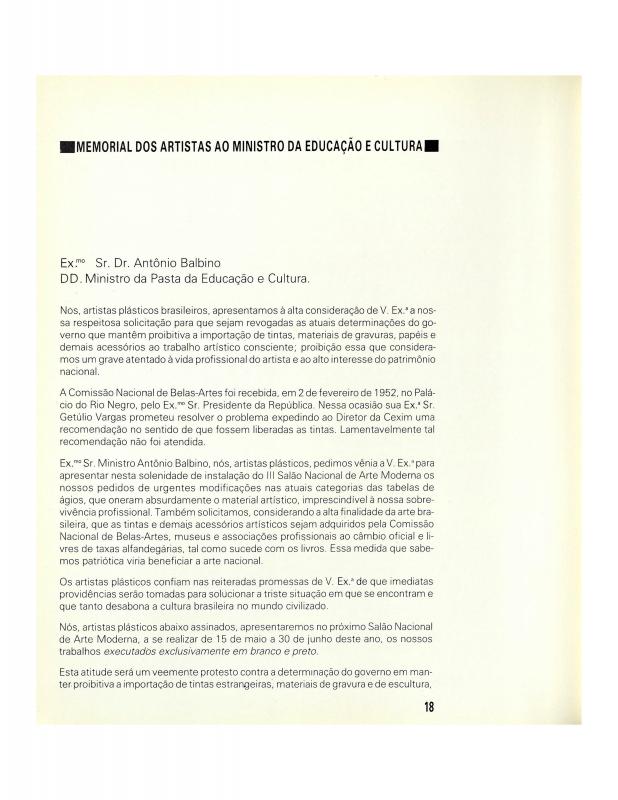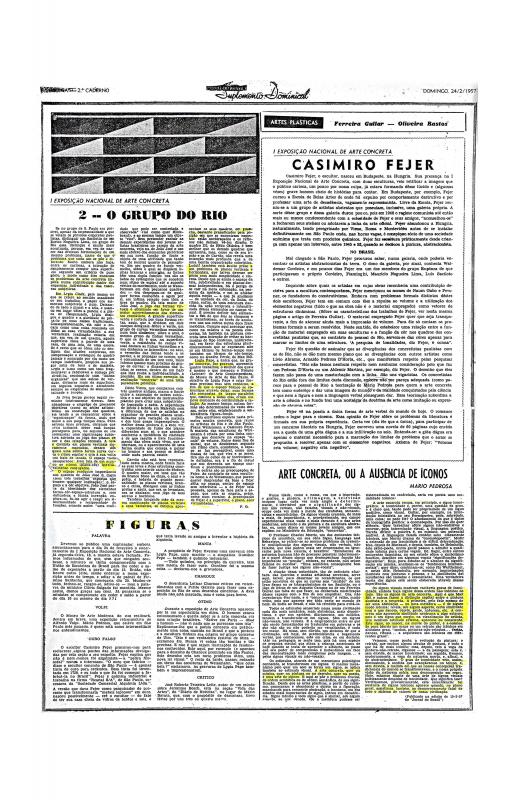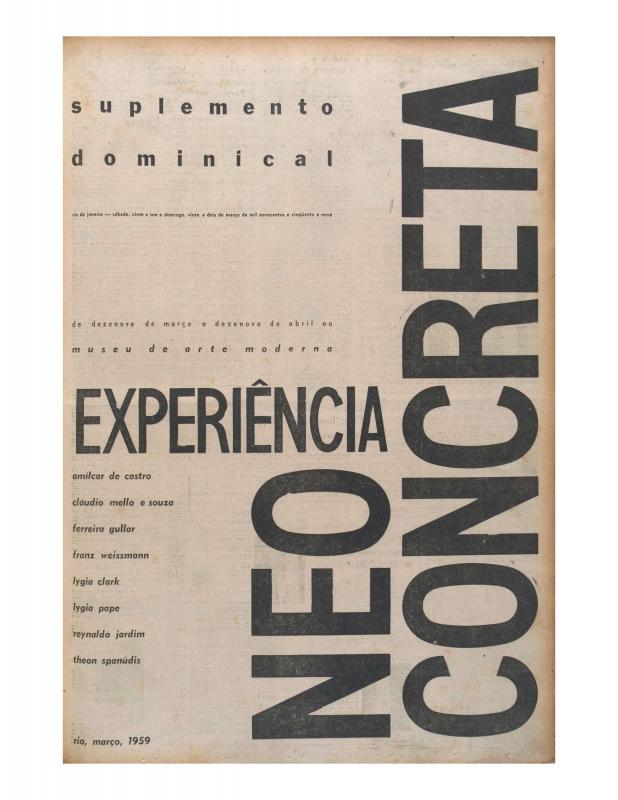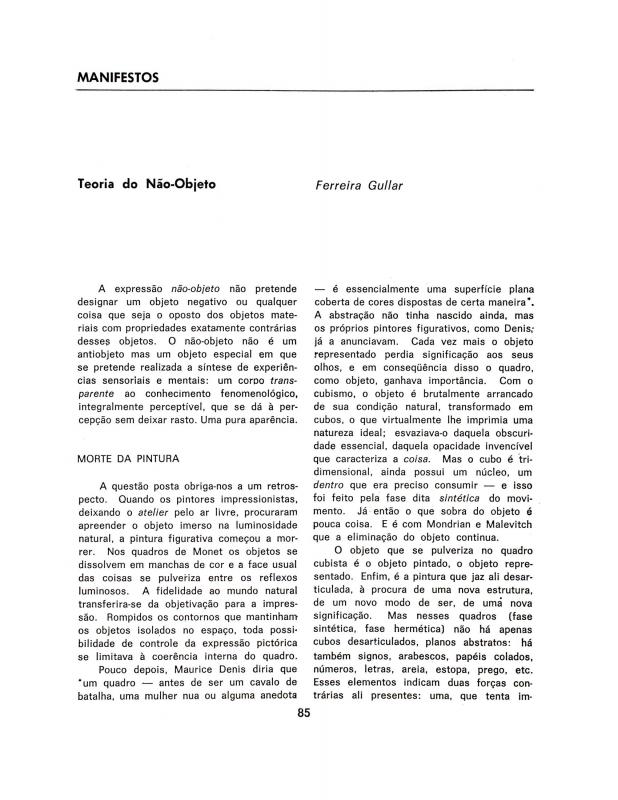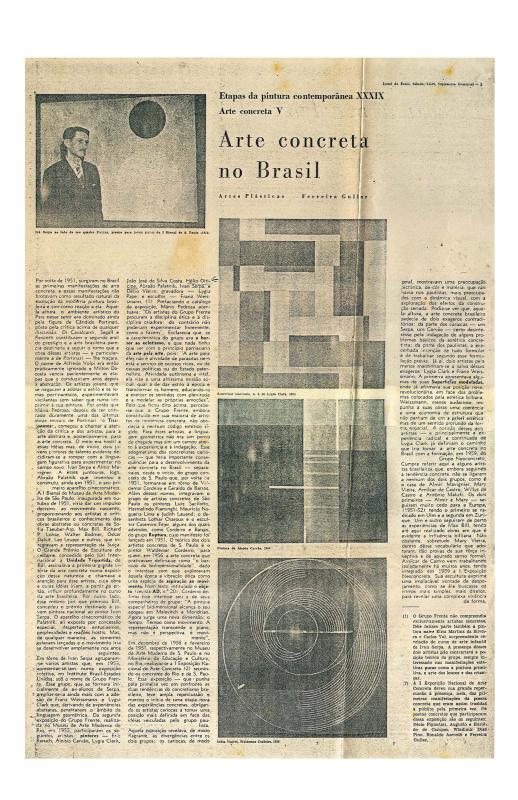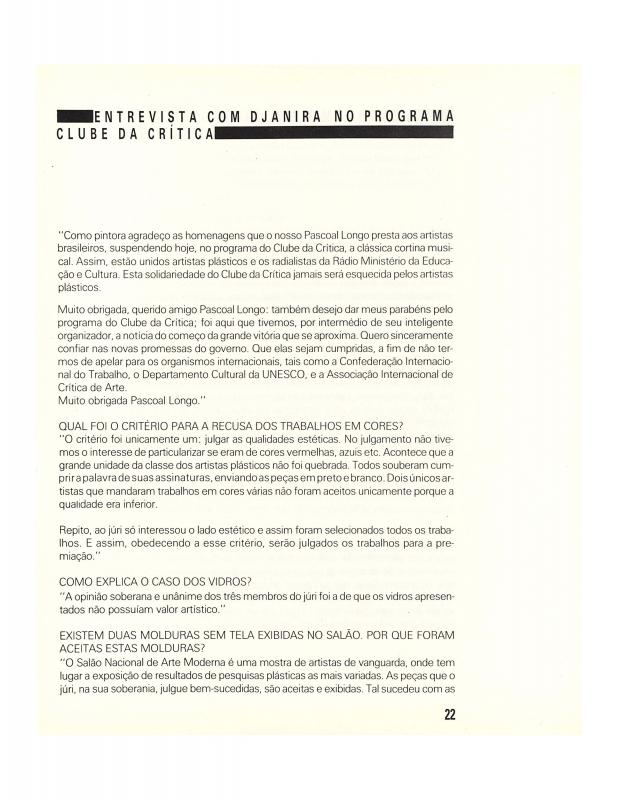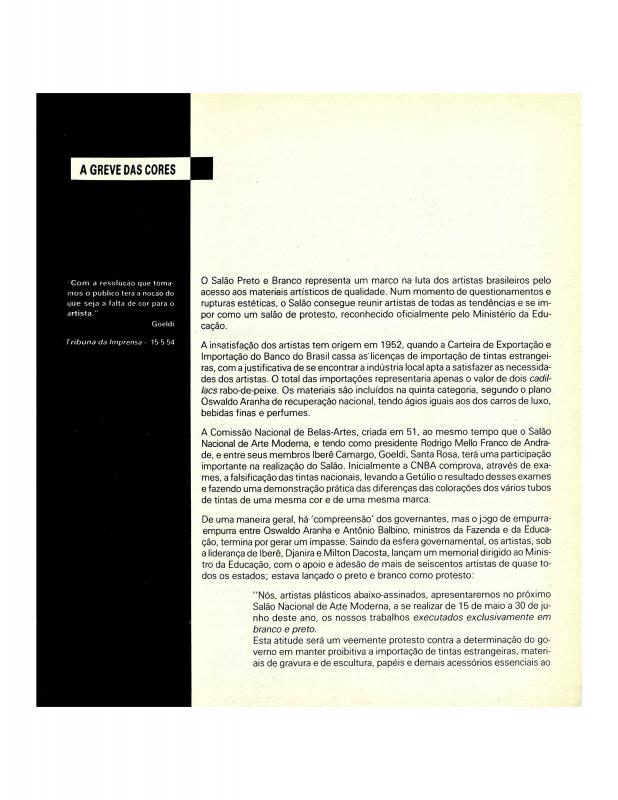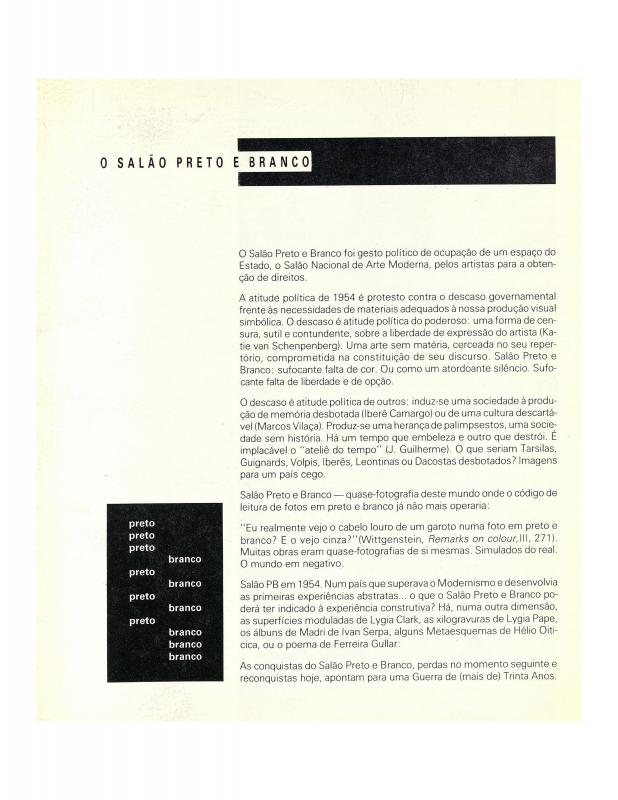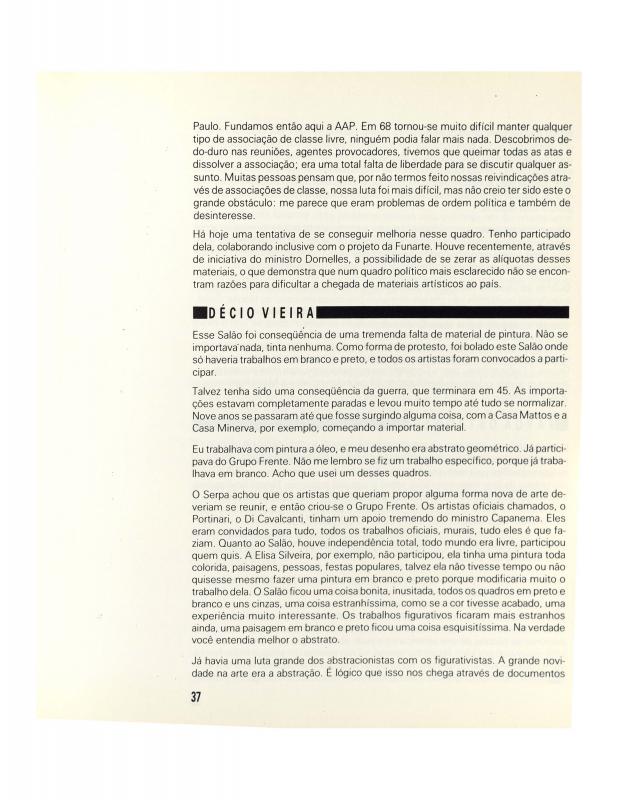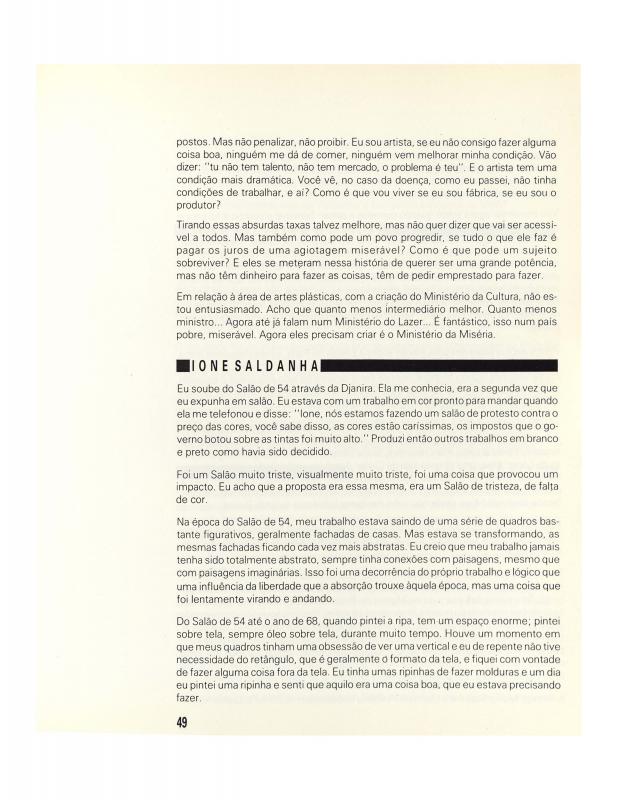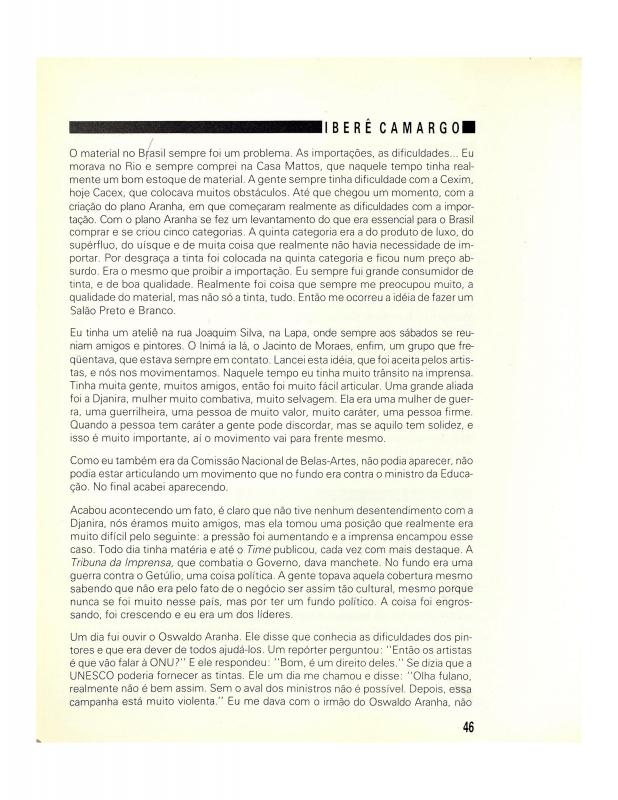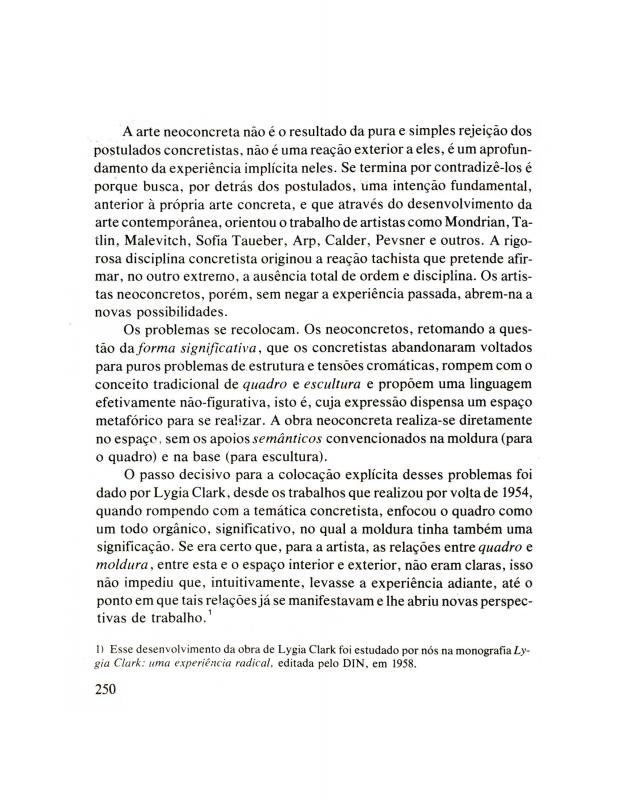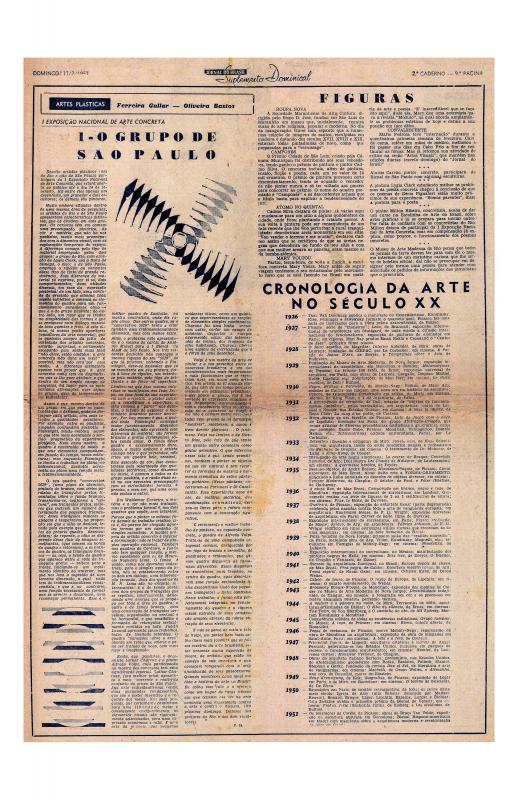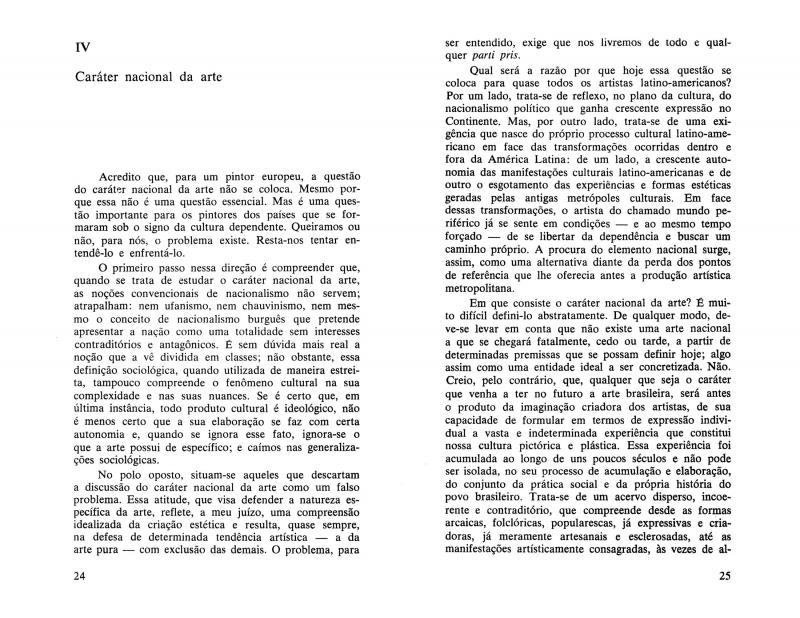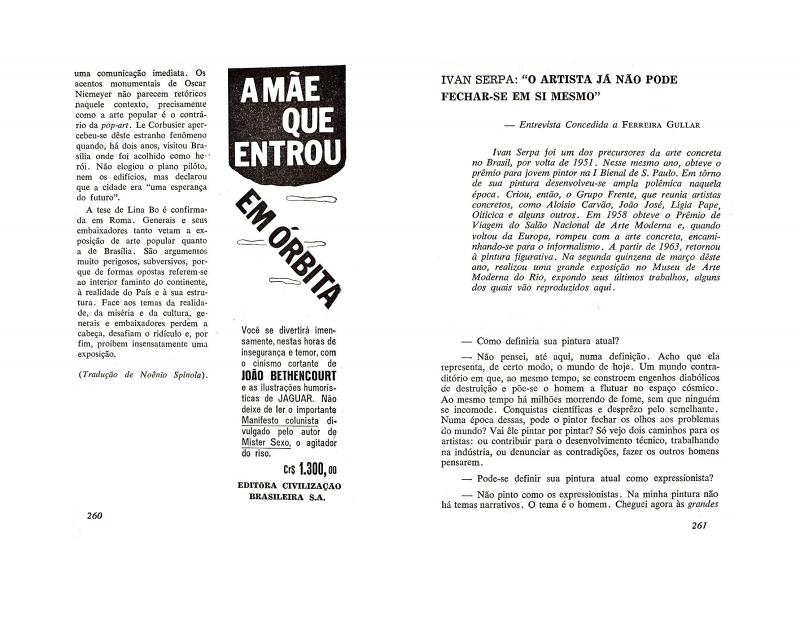The Salão Nacional de Arte Moderna was presented for the first time in 1952 in the wake of the División Moderna (Modern Division) at the Salão Nacional de Belas Artes. The third edition, which came to be known as the Salão Preto e Branco (Black-and-White Salon), opened on May 15, 1954. Participating artists protested against the poor quality of available art materials (mainly substitutes for imported products) due to import restrictions imposed by the Brazilian government. Led by Iberê Camargo, Milton Dacosta, and Djanira, six hundred artists from all over the country signed a manifesto addressed to the Ministério da Educação e Saúde (MES), the Ministry of Education and Health in the Getúlio Vargas administration, objecting to any restrictions on the import of paint, items used for printmaking and sculpture, paper, and other basic materials (see, in the ICAA digital archive: doc. no. 1307648">1307648). Gullar stresses how important the Salón was for the members of the Grupo Frente, who were beginning to develop an alternative to figurative art. In his opinion, the group’s phenomenological approach contradicted the lyrical “irrationality” of Tachisme and the mathematical “rationality” of Constructivism, which would ultimately define Neo-Concretism.
The critic and poet [José Ribamar] Ferreira Gullar (1930–2017), one of Grupo Frente’s key theorists, published his first articles in the Sunday supplement of Jornal do Brasil in 1955. He took part in Exposição Nacional de Arte (doc. no. 1090217">1090217) at the Museu de Arte Moderna de São Paulo in 1956 and at the MES, which organized the Salão Nacional de Arte Moderna, in 1957. As a response to the first Exposição neoconcreta in Rio de Janeiro in 1959, he wrote the Manifiesto Neoconcreto (doc. no. 1110328), which was also published in the Sunday supplement of Jornal do Brasil. That same year he wrote “Teoria do Não-Objeto” (Theory of the Non-Object, doc. no. 1091374), which was published in the same newspaper. From March 1959 to October 1960, Gullar published a series of theoretical articles, “Etapas da Arte Contemporânea” (doc. no. 1090830), which were later included in the book Ferreira Gullar: Etapas da arte contemporânea—do cubismo à arte neoconcreta (Ferreira Gullar: Stages of Contemporary Art—from Cubism to Neo-Concrete Art, 1998).
Gullar’s recollections (and those of other artists) were included in the book A Arte e seus materiais: Salão Preto e Branco, 3º Salão Nacional de Arte Moderna, 1954 (Art and its Materials: Black-and-White Salon, Third National Modern Art Salon, 1954), published on the occasion of the 1985 exhibition at the Galería Especial del Salão Nacional de Artes Plásticas. In Herkenhoff’s opinion, the situation recalled the famous Black-and-White Salon of 1954 in which works by Camargo, Aluísio Carvão, Anna Letycia, Aldo Bonadei, Ivan Serpa, Lygia Clark, Maria Helena Andrés, Maria Leontina, Tarsila do Amaral, Ubi Bava, and many others were shown. The publication includes primary and secondary sources that refer to the 1954 exhibition, as well as interviews with contemporary artists and critics.
[For complementary reading on the subject of the Salão Preto e Branco (Black-and-White Salon), see: “Memorial dos artistas ao Ministro da Educação e Cultura” (doc. no. 1307648">1307648); “Mensagem do Ministro da Educação e Cultura ao artistas” (doc. no. 1307663); “Entrevista com Djanira no programa clube da crítica” by Pascoal Longo (doc. no. 1307678); “Depoimentos: Aluísio Carvão” by Glória Ferreira and Luiza Interlenghi (doc. no. 1307694); “A greve das cores” by Glória Ferreira (doc. no. 1307631); “O Salão Preto e Branco” by Paulo Herkenhoff (doc. no. 1307599); the five following testimonials conducted by Luiza Interlenghi, “Depoimentos: Décio Vieira” (doc. no. 1307712); “Depoimentos: Ione Saldanha” (doc. no. 1307774); “Depoimentos: José Silveira D’Ávila” (doc. no. 1307791); “Depoimentos: Sérgio Camargo” (doc. no. 1307831); “Depoimentos: Ubi Bava” (doc. no. 1307851); and “Depoimentos: Iberê Camargo” by Evelyn Yoschpe (doc. no. 1307754).]
[In other articles Ferreira Gullar refers to some of what is mentioned here; see: “Ia Exposição Nacional de Arte Concreta: 2 - O grupo do Rio” (doc. no. 1090217">1090217); “Do quadro ao não objeto” (doc. no. 1091272); “O Grupo de São Paulo: Ia Exposição Nacional de Arte Concreta” (doc. no. 1087166); “Caráter nacional da arte” (doc. no. 807930); and “Ivan Serpa: ‘O artista já não pode fechar-se em si mesmo’” (doc. no. 1110374).]

